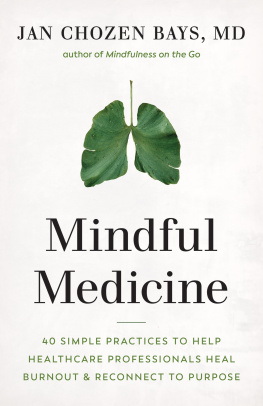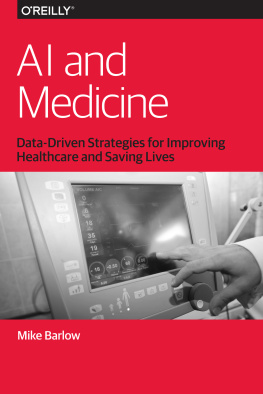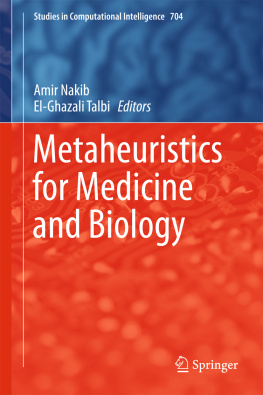Copyright 2020 by Shaun Comfort.
All rights reserved.
No part of this book may be used or reproduced in any manner whatsoever without written permission, except in the case of brief quotations embodied in critical articles and reviews. Requests for authorization should be addressed to Shaun Comfort: .
Cover design by Darren Nelson
Interior layout and design by www.writingnights.org
Book preparation by Chad Robertson
Editing by Chantal Matkin Dolan, Elayne Wells Harmer, and Diana Matkin
ISBN: 979-8-6456-5138-1
Library of Congress Cataloging-in-publication Data:
Names : Comfort, Shaun, MD, MBA, author
Title : How Much is that Cure in the Window? Simple Math Solutions for Complicated Problems in Biology, Medicine, and Healthcare/ Shaun Comfort
Description : Independently Published, 2020
Identifiers : ISBN 9798645651381 (Perfect bound) |
Subjects : | Non-Fiction | Science | Mathematics | Healthcare |
Classification : Pending
LC record pending
Independently Published
Printed in the United States of America.
Printed on acid-free paper.
Although the author and publisher have made every effort to ensure that the information in this book was correct at press time, neither author nor publisher assumes any liability to any party for any loss, damage, or disruption caused by errors or omissions, whether such errors or omissions result from negligence, accident, or any other cause. Both author and publisher hereby disclaim any liability to any party. Readers should contact their attorney to obtain advice before pursuing any course of action.
Dedication
To my wife, thank you for all the encouragement
during the writing of this. It meant the world
Epigraph
I would have you realize, my lord, that men are at the mercy of circumstance, and not their master.
Artabanus advising Xerxes before he made the disastrous decision to invade Greece (Herodotus, The Histories )
I find a nice long whisky and soda a great solvent of human idiocy.
Sondelius speaking to Martin Arrowsmith (Sinclair Lewis, Arrowsmith )
Contents
Table of Figures
Acknowledgements
B efore starting, I want to acknowledge that many other authors and thinkers have used the Fermi approach, Bayesian estimation, and statistical thinking for problem solving. While my focus on applying the Fermi method to healthcare and pharma is somewhat new, many of these same techniques and problems are classic, and other authors have masterfully described them. Throughout my book, I will refer to others approaches to similar problems.
I wish to thank all those who have inspired and encouraged me to take my curious hobby to the next stage and write a book. You are too numerous to name but I must mention at least a few. First and foremost, I thank my wife, Hilary, who lovingly supported all my evening calculations and writing for so many years. My familyespecially my father, mother, brother, and Uncle Jiminstilled curiosity and wonder in me from an early age. My uncle showed my brother and me how to make rockets with Vienna Sausage cans, and my father showed us the moon through a telescope. I thank my physics professors, especially Drs. Swartz, Melosh, and Sprouse, for their encouragement and humor as I went through Stony Brook; I looked up to them then, and still do. Susie, Sally, and John, my friends and mentors who made all the difference in encouraging me to take on physics and medicineI doubted much, but you never did!
I also want to thank the many great supervisors, leaders, and colleagues Ive had throughout my career in physics, medicine, and the healthcare industry. David, Cynthia, Bill, Greg, Mark, Glenn, Ellis, Wilson, and Joel were all examples of the kind of leaders I wanted to be. I have been blessed to have supportive leaders and organizations that saw potential in my development, supported my innovation and ideas, and allowed someone like me to thrive and grow.
I also want to thank my colleagues and collaborators in research and work for inspiring me to bring my best to the game and to think creatively about everything from applying statistics to safety to teaching machines to find adverse events. Cartic, Darren, Jen, Meena, Shawman, and Irene: yall are the best, and I hope you find this work entertaining while relaxing between machine-learning projects!
To the ladies in CMD Consulting (Chantal, Elayne, and Diana), thank you for your enthusiasm, interest, and honesty in taking on this book project and for helping me turn a dream into reality. I cannot say enough good things about the work you do!
Finally, I could not have written this book without the groundwork laid by others. As the twelfth-century theologian and author John of Salisbury stated,
Our age enjoys the benefit of the age preceding, and often knows more than it, not indeed because our intelligence outstrips theirs, but because we depend on the strength of others and on the abundant learning of our ancestors. Bernard of Chartres used to say that we are like dwarfs sitting on the shoulders of giants so that we are able to see more and further than they, not indeed by the sharpness of our own vision or the height of our bodies, but because we are lifted up on high and raised aloft by the greatness of giants.
Shaun Comfort, MD, MBA
April 2020
Chapter 1
Why?
M y challenge is to challenge you! Join me on a short journey through a few classic and not-so-common problems from biology, medicine, pharma, and the healthcare world (what I will coarsely aggregate into the acronym BHI or the term biohealthcare industry going forward). Ill introduce you to two personal heroes of mine: Dr. Enrico Fermi, developer of the first controlled fission reaction, and Reverend Thomas Bayes, who originated Bayes Rule in probability. Today, Fermi problems are named in honor of Professor Fermi and are commonly used as part of interview techniques for business schools and technology firms. They are also used as first approximations to solving complex problems in physics and engineering.
Seeing how someone works their way through such a problem can tell you a great deal about their ability to think. Similarly, after spending nearly 200 years as an outlier branch of probabilistic thinking, Reverend Bayes thinking has now come to have a major impact on the world of machine learning and artificial intelligence. These gentlemen, along with others such as Ludwig Boltzmann, had much to say about the processes that generate our world, including medicine and healthcare.
I was introduced to Professor Fermis approach during my first physics course at Stony Brook University, located about 65 miles east of New York City. I arrived at Stony Brook from Mississippi, wearing my typical outfit of cowboy boots, jeans, jacket, and a beat-up bush hat. To say I did not fit in is an understatement; I was skinny, nave, and freezing. I had failed algebra in high school and dropped out of college to play music up and down the coast of California. For some reason, I was drawn to physics because it seemed to have the greatest promise for helping me understand why: Why was the world the way it was? Why do so many random things happen to my family and friends? Why does time pass?
I jumped into the field and worked night and day to overcome my previous shortcomings with math, and I did reasonably well. At the time, I had no idea how physics would change my life, and how learning to reason quantitatively would lead me to a world that only Fermi could imagine. His approach became my first-line method for evaluating problems in my first career in computational electro-optics. Now, after becoming a physician and neurologist, it is still my guide to thinking about problems in healthcare, as well as a favorite pastime when I am waiting in line at an airport or hotel.













